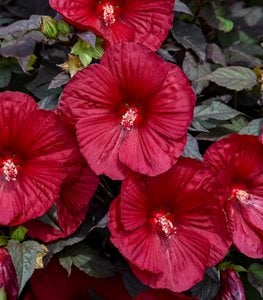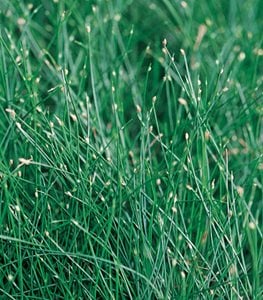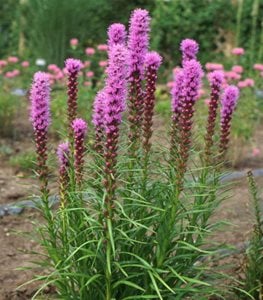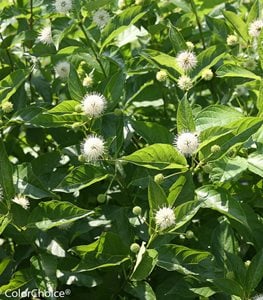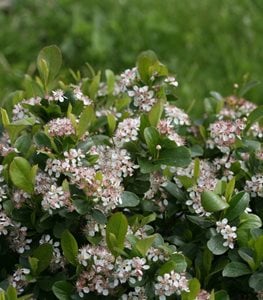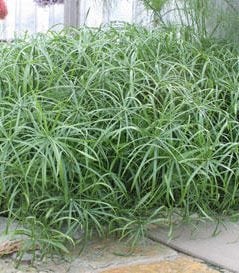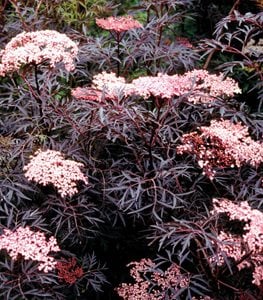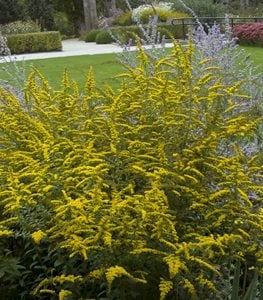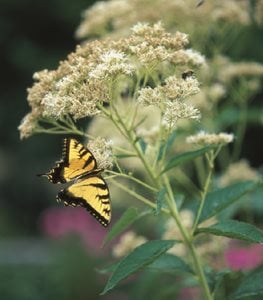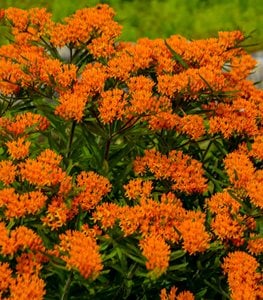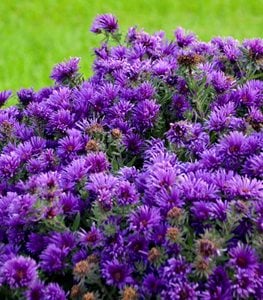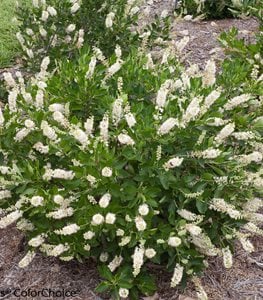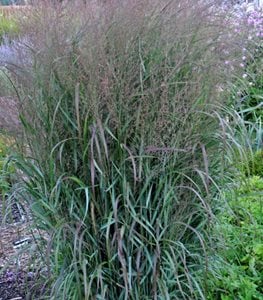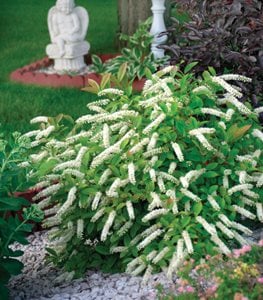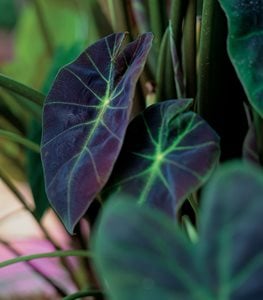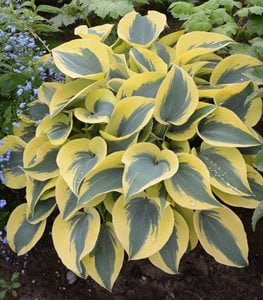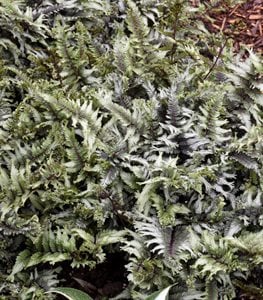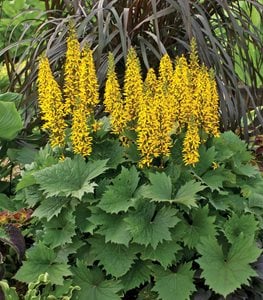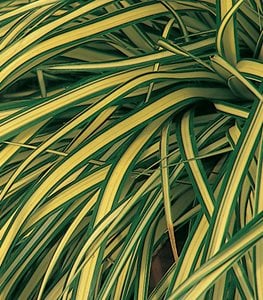20+ Rain Garden Plants to Grow
Include these adaptable plants in your rain garden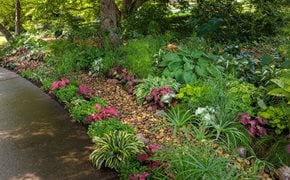
See more on this rain garden. Photo by: Proven Winners.
Adding a rain garden to your landscape is a way to conserve water by keeping rainwater in your yard instead of having it flow into storm drains and sewer systems. A shallow basin is created to trap runoff, allowing water to slowly percolate into the soil. Plants help control erosion and filter pollutants, while providing food and habitat for wildlife and insect pollinators.
The best rain garden plants are moisture-tolerant natives that can also endure dry periods, and are easily adaptable to your region. Sedges, grasses, and reeds play a significant role with their deep root systems that enable water to seep into the soil more efficiently. Choose plants based on your region and hardiness zone, amount of annual rainfall, light exposure, and soil conditions. Here are some of the best plants to include in your rain garden.
See more on Rain Garden Design & Benefits
On this page: Rain Garden Plants for Full to Partial Sun | Rain Garden Plants for Partial Shade | Other Rain Garden Plants
On this page:
- RAIN GARDEN PLANTS FOR FULL TO PARTIAL SUN
- RAIN GARDEN PLANTS FOR PARTIAL SHADE
- OTHER RAIN GARDEN PLANTS
RAIN GARDEN PLANTS FOR FULL TO PARTIAL SUN
ROSE MALLOW (Hibiscus moschuetos)
Zones: 4-9
Habit: Upright bushy habit
Height/Spread: 4 to 5 feet tall, 5 feet wide
Bloom time: Mid-summer to early fall
Use this deciduous shrub in a mixed rain garden border, in containers, or as a stand-alone focal point.
Learn more about growing rose mallow bushes.
Pictured: Summerific® 'Holy Grail' rose mallow from Proven Winners.
FIBER OPTIC GRASS (Isolepis cernua)
Zones: 8-10
Habit: Mounding arching habit
Height/Spread: 10 to 14 inches tall and wide
Bloom time: Summer
Tiny brown flowers that appear along the stem tips in summer give the appearance of a fiber optic lamp, hence the name. Use this finely textured grass-like plant in mass plantings or containers. Grows at wetland margins in its native habitats.
Pictured: Graceful Grasses® Fiber Optic grass from Proven Winners.
BEE BALM (Monarda spp.)
Zones: 3-9
Habit: Upright spreading habit
Height/Spread: 10 inches to 4 feet tall, 8 inches to 3 feet wide
Bloom time: Late spring to early fall
Tubular flowers in colors of red, pink, purple, lavender, or white are attractive to butterflies and other insect pollinators. Foliage of this mint relative is pungently scented. This North American native perennial can be found growing in floodplain meadows and along streams and ponds.
Learn more about growing bee balm.
Pictured: 'Pardon My Cerise' bee balm from Proven Winners.
BLAZING STAR (Liatris spp.)
Zones: 3-9
Habit: Upright habit
Height/Spread: 1 to 5 feet tall, 6 inches to 2 feet wide
Bloom time: Summer to fall
Known as gayfeather for the wispy flower plumes, the purple or white spikes attract bees and other insect pollinators. While some species of this North American native perennial prefer dry prairie conditions, others can be found growing in moist meadows and wet marshes.
Learn more about growing blazing star.
Pictured: 'Kobold' blazing star from Proven Winners.
BUTTON BUSH (Cephalanthus occidentalis)
Zones: 5-9
Habit: Upright bushy habit
Height/Spread: 5 to 12 feet tall, 4 to 8 feet wide
Bloom time: Early summer to early fall
Fragrant white flowers resemble rounded pincushions, creating a striking effect in the landscape. This moisture-loving deciduous shrub is native to eastern and southern regions of North America, as well as California and Arizona. It can be found growing along rivers, marsh edges, wet thickets, and swamps. Naturalize in a meadow or near a rain garden.
Learn more about growing buttonbush.
Pictured: Sugar Shack® button bush from Proven Winners.
CHOKEBERRY (Aronia spp.)
Zones: 3-9
Habit: Upright bushy habit
Height/Spread: 8 inches to 12 feet tall, 1-1/2 to 10 feet wide
Bloom time: Spring
Native to eastern North America, chokeberry can be found growing in open woodlands, swamps and bogs. This deciduous shrub with multi-seasonal interest can be naturalized in wet areas where little else will grow. The edible blueberry-like fruits have a host of health benefits.
Learn more about growing chokeberry shrubs.
Pictured: Low Scape Mound® chokeberry from Proven Winners.
EGYPTIAN PAPYRUS GRASS (Cyperus papyrus)
Zones: 9-12
Habit: Upright habit
Height/Spread: 5 to 12 feet tall, 2 to 5 feet wide
Bloom time: Summer
This grasslike sedge, native to Egypt, is grown for the showy tall flower spikes that create a tropical effect in the landscape. Plant this water lover in containers or at the edge of a water feature such as a pond, stream, or rain garden. May be invasive in southern regions.
Pictured: Graceful Grasses® King Tut® Egyptian papyrus grass from Proven Winners.
ELDERBERRY (Sambucus spp.)
Zones: 3-9
Habit: Upright bushy habit
Height/Spread: 3 to 30 feet tall and wide
Bloom time: Spring to summer
Named for the edible fruit, elderberry is a deciduous shrub that occurs naturally in open woodlands and along streams in the U.S. and Europe. The lacy or dissected foliage can be green, gold, black, or variegated. Flowers are white or pink, while berries are blue-black or red.
Learn more about growing elderberry.
Pictured: Black Lace® elderberry from Proven Winners.
GOLDENROD (Solidago rugosa)
Zones: 3-10
Habit: Upright habit
Height/Spread: 1 to 7 feet tall, 1 to 6 feet wide
Bloom time: Late summer to fall
A quintessential fall bloomer, goldenrod is known for its bright yellow flower plumes that are attractive to butterflies and other insect pollinators. Species that prefer damp soil occur naturally in wet prairies, shore meadows, and roadside ditches. Use this reliable perennial as a background plant, or naturalize in a rain or meadow garden.
Learn more about growing goldenrod.
JOE PYE WEED (Eutrochium spp.)
Zones: 3-9
Habit: Upright habit
Height/Spread: 3 to 8 feet tall, 1 to 5 feet wide
Bloom time: Mid-summer to fall
Showy late season pink flower plumes are a favorite of butterflies and other insect pollinators. This North American native perennial grows naturally in roadside ditches, wet meadows, and moist thickets. Naturalize in a meadow or at the edge of a rain garden.
Learn more about growing Joe Pye weed.
BUTTERFLY WEED / MILKWEED (Asclepias spp.)
Zones: 3-9
Habit: Upright habit
Height/Spread: 1 to 6 feet tall, 1 to 3 feet wide
Bloom time: Summer
A crucial food source for monarch butterfly larvae, milkweed is one of the best native pollinator plants. Swamp milkweed and other milkweed species thrive in swamps, sloughs, marshes, and roadside ditches. Use this reliable flowering perennial in a habitat rain garden.
Learn more about growing milkweed.
Pictured: butterfly weed from Proven Winners.
NEW ENGLAND ASTER (Symphyotrichum nova-angliae)
Zones: 4-8
Habit: Upright spreading habit
Height/Spread: 2 to 6 feet tall, 1 to 3 feet wide
Bloom time: Late summer to fall
Daisy-like flowers that occur in colors of pink, purple, lavender, or white are a favorite of butterflies and bees. This late blooming North American native grows naturally in moist prairies, along stream banks, ponds, lakes, and roadside ditches. Mass in a rain garden with other wildlife-friendly plants.
Learn more about growing asters.
Pictured: Grape Crush New England aster from Proven Winners.
SUMMERSWEET (Clethra alnifolia)
Zones: 4-9
Habit: Upright bushy habit
Height/Spread: 3 to 8 feet tall, 3 to 6 feet wide
Bloom time: Mid to late summer
Summersweet is a deciduous shrub native to coastal swamps, woodlands and river shorelines of the eastern and southern U.S. Showy bottlebrush flowers that occur in shades of white or pink are sweetly fragrant. Use in a background plant in a rain garden.
Learn more about growing summersweet shrubs.
Pictured: Vanilla Spice® summersweet from Proven Winners.
SWITCHGRASS (Panicum virgatum)
Zones: 5-9
Habit: Upright habit
Height/Spread: 3 to 6 feet tall, 2 to 3 feet wide
Bloom time: Late summer to fall
This clumping native grass occurs naturally in wet soils along streams and creeks. Airy flower panicles bloom above wispy foliage that starts out green with red highlights, turning gold in fall, then tawny brown for winter interest. The deep root system helps to stem erosion and improve soil and water quality.
Learn more about growing switchgrass.
Pictured: Prairie Winds® 'Apache Rose' switch grass from Proven Winners.
VIRGINIA SWEETSPIRE (Itea virginica)
Zones: 5-9
Habit: Mounding bushy habit
Height/Spread: 3 to 5 feet tall and wide
Bloom time: Late spring to early summer
Arching white flower spikes on this deciduous shrub create an elegant effect in the landscape. Foliage turns brilliant shades of red, orange, and gold in fall. Native to damp woodlands, swamps, and stream sides in the eastern U.S. Use this suckering deciduous shrub for erosion control or as a background plant.
Learn more about growing sweetspire shrubs.
Pictured: Little Henry® sweetspire from Proven Winners.
RAIN GARDEN PLANTS FOR PARTIAL SHADE
ELEPHANT EAR (Colocasia esculenta)
Zones: 8-11
Habit: Upright vase-shaped habit
Height/Spread: 3 to 8 feet tall and wide
Add an exotic touch to your rain garden with the bold foliage of elephant ears. The large heart-shaped leaves can reach up to 3 feet long and 2 feet wide. This tropical Asian native thrives in boggy soil or around water gardens. Can be invasive along the Gulf Coast.
Learn more about growing elephant ear plants.
Pictured: Illustris elephant ear from Proven Winners.
HOSTA (Hosta spp. & hybrids)
Zones: 3-9
Habit: Spreading habit
Height/Spread: 2 inches to 4 feet tall, 5 inches to 6 feet wide
One of the most popular shade plants, hosta is grown for the wide range of foliage colors, shapes, patterns, and sizes. In its native Asian habitat, this reliable perennial receives 50 to 60 inches of rain per year, making it a good choice to plant along streams, ponds, or in rain gardens.
Learn more about growing hosta plants.
Pictured: Shadowland® 'Autumn Frost" hosta from Proven Winners.
JAPANESE PAINTED FERN (Athyrium niponicum var. pictum)
Zones: 3-8
Habit: Arching spreading habit
Height/Spread: 1 to 2 feet tall and wide
Striking silver patterned foliage of this perennial deciduous fern is useful for lighting up deeply shaded areas. This water lover thrives in mixed or woodland borders, along streams, ponds, or rain gardens. Plants are low maintenance and virtually free of pests and diseases.
Learn more about different types of ferns.
Pictured: 'Crested Surf' Japanese painted fern from Proven Winners.
LEOPARD PLANT (Ligularia spp.)
Zones: 3-8
Habit: Upright spreading habit
Height/Spread: 3 to 4 feet tall, 2 to 3 feet wide
Grown for the bold green or burgundy leaves and stately yellow flower spikes, this Asian native grows naturally along stream banks or other water sources. Plant this herbaceous perennial in a shade border, near a water feature, in a rain or bog garden, or in containers.
Pictured: 'Bottle Rocket' ligularia from Proven Winners.
SEDGE (Carex spp.)
Zones: 3-9
Habit: Mounding or upright habit
Height/Spread: Most are 1 to 2 feet tall and wide; others 4 to 54 inches tall, 6 to 60 inches wide
This diverse genus, grown primarily for the foliage, includes thousands of grass-like species that can be grown in sun or shade, wet, or dry conditions. Most remain compact, with deciduous or evergreen foliage in shades of green, gold, orange, blue, brown, or variegation. Use in mass plantings, as edging, or in combination with other sedges and grasses.
Learn more about growing sedges.
Pictured: 'Evergold' sedge from Proven Winners.
OTHER RAIN GARDEN PLANTS
TREES:
In addition to shrubs and perennials, good trees for rain gardens include papaw (Asimina triloba), redbud (Cersis canadensis), hackberry (Celtis occidentalis) and river birch (Betula nigra).
MARGINAL PLANTS:
For outer edges where the soil will be drier, plant canna, blue star (Amsonia), false indigo (Baptisia), or some types of phlox.
RELATED:
How & Why to Grow Native Plants
